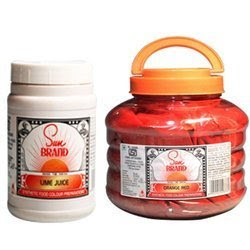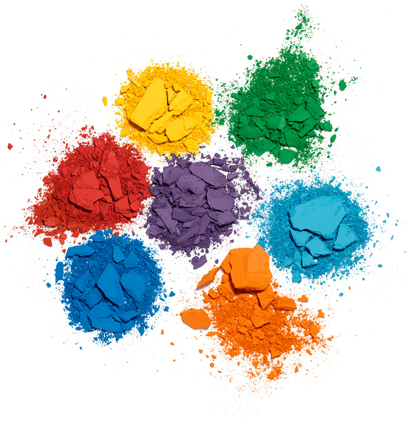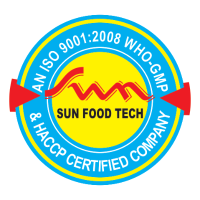Manufacturers and Exporters of Blended Food Colors in India
Sun Brand & Arun Brand Blended food colours are available in large variety of shades & concentration.We can provide almost any shade desired by customer with the required dye contents. To name a few, we have Apple green, Egg Yellow, Lemon Yellow, Raspberry Red, Orange Red, Chocolate Brown. We take special care to ensure that Blends are consistant in each lot. Liquid Food Colours are also available in different shades and dye contents. Backed by an expert team of professionals, we have come up with a remarkable assortment of Synthetic Food Dye with the brand name Sun. The quality-approved products are hygienically prepared and are developed in accordance with the international quality standards.
Blended food colors, also known as mixed or compound food colors, are created by combining primary food colors (red, blue, yellow, and sometimes black) to achieve a wide array of shades and hues. These colors are essential in culinary arts, baking, and food manufacturing, enabling creators to make their products visually appealing and to match the expected appearance of flavors (like green for mint or red for strawberry).
Types of Blended Food Colors
Liquid Food Colors: These are water-based and are great for achieving pastel shades. They're commonly used in more liquid applications like icings and batters.
Gel or Paste Food Colors: These provide more vivid colors without thinning out the mixture they are added to. They're ideal for things like fondant, frosting, and dough.
Powder Food Colors: Excellent for dry applications and when you want to avoid adding any liquid to your mix. They're also used for coloring chocolate.
Oil-based Colors: Specifically designed for use with fats and oils, these are perfect for chocolate and candy making.
Creating the perfect shade requires a basic understanding of color theory. Mixing primary colors (red, blue, and yellow) in various ratios can produce a broad spectrum of colors. For example:
- Red and yellow make orange.
- Yellow and blue make green.
- Blue and red make purple.
- Combining all three primary colors can give you brown or gray, depending on the ratios.
For more nuanced shades, you can start with a secondary color (like orange, green, or purple) and adjust its brightness, saturation, or hue by adding more of one of the primary colors involved in making it or by incorporating black or white (in the form of powdered sugar or titanium dioxide for food applications).





Comments